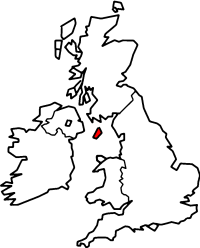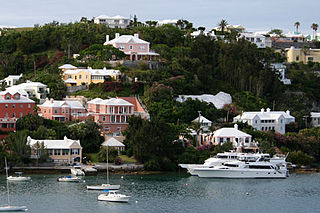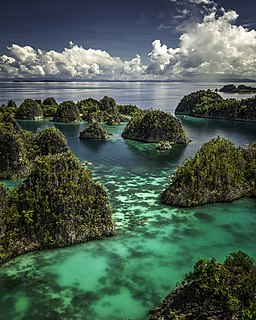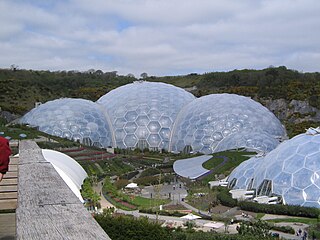
The tourism industry of the Isle of Man has been an important element in the economy for over a century.

The tourism industry of the Isle of Man has been an important element in the economy for over a century.
In the early days visitors were mostly richer British families. Key for the development of the sector in the Victorian Era was the introduction of ferry connections with steamships between Liverpool and the Isle of Man, [1] the Isle of Man Railway, and the Victoria Pier in Douglas.
Later in the 19th and early 20th centuries, the island was the destination for working-class families, mainly from the north of England and from Ireland. In 1964 tourism, which was already in decline, "was still responsible for 75 per cent of the gross value of the production of the major forms of industry: moreover, 21 per cent of the working population found employment in some branch of the tourist industry". [2]
The Edwardian era brought the mass tourism "driven mostly by the Lancashire cotton" industry [1] which gave its workers "a one week 'Wakes week' holiday".
In the 21st century, tourism is rather different. Today the tourist accommodation sector only accounts for 0.3% [3] of the Gross National Income (GNI), and employed 629 people in 2016. [4]
In 2016 an estimated 135,000 tourists stayed in paid accommodation on the island; in addition, almost 100,000 stayed with friends or family, and there were almost 60,000 business visitors including day trippers. [4]
Despite the historical decline in tourism, many tourists visit the island for the famous TT races (about 45,000 in 2017), [5] and for its rolling countryside and coastline.

The Isle of Man, also known as Mann, is a self-governing British Crown Dependency in the Irish Sea between Great Britain and Ireland. As head of state, Charles III holds the title Lord of Mann and is represented by a Lieutenant Governor. The United Kingdom is responsible for the isle's military defence and represents it abroad.

The economy of the Isle of Man is a low-tax economy with insurance, online gambling operators and developers, information and communications technology (ICT), and offshore banking forming key sectors of the island's economy.

The economy of Saint Helena is based on export income from coffee, tourism, fishing, and sales of alcoholic liqueurs. Unemployment is very low in Saint Helena; the February 2016 Census stated that 76 people declared that they were unemployed compared to an economically active population of 2,539 and a total population of 4,534. Saint Helena is one of four countries which depend on financial assistance from the United Kingdom, which amounted to about £22.5 million in 2016–17. This supplements the £12.6 million raised from local tax revenues.

The economy of Trinidad and Tobago is the third wealthiest in the Caribbean and the fifth-richest by GDP (PPP) per capita in the Americas. Trinidad and Tobago is recognised as a high-income economy by the World Bank. Unlike most of the English-speaking Caribbean, the country's economy is primarily industrial, with an emphasis on petroleum and petrochemicals. The country's wealth is attributed to its large reserves and exploitation of oil and natural gas.
The economy of the United States Virgin Islands is primarily dependent upon tourism, trade, and other services, accounting for nearly 60% of the Virgin Island's GDP and about half of total civilian employment. Close to two million tourists per year visit the islands. The government is the single largest employer. The agriculture sector is small, with most food being imported. The manufacturing sector consists of rum distilling, electronics, pharmaceuticals, and watch assembly. Rum production is significant. Shipments during a six-month period of fiscal year 2016 totaled 8,136.6 million proof gallons.

Bermuda is a British Overseas Territory comprising a number of islands, with an area of 54 km2 (20.8 sq mi), located in the North Atlantic Ocean, which in 2016 had a population of 65,331.

In the United States, tourism is a large industry that serves millions of international and domestic tourists yearly. Foreigners visit the U.S. to see natural wonders, cities, historic landmarks, and entertainment venues. Americans seek similar attractions, as well as recreation and vacation areas.

Tourism in Indonesia is an important component of the Indonesian economy as well as a significant source of its foreign exchange revenues. Indonesia was ranked at 20th in the world tourist Industry in 2017, also ranked as the ninth-fastest growing tourist sector in the world, the third-fastest growing in Asia and fastest-growing in Southeast Asia. In 2018, Denpasar, Jakarta and Batam are among of 10 cities in the world with fastest growth in tourism, 32.7, 29.2 and 23.3 percent respectively. The tourism sector ranked as the 4th largest among goods and services export sectors.

The culture of the Isle of Man is influenced by its Celtic and, to a lesser extent, its Norse origins, though its close proximity to the United Kingdom, popularity as a UK tourist destination, and recent mass immigration by British migrant workers has meant that British influence has been dominant since the Revestment period. Recent revival campaigns have attempted to preserve the surviving vestiges of Manx culture after a long period of Anglicisation, and significant interest in the Manx language, history and musical tradition has been the result.
The United Kingdom is the world's 10th biggest tourist destination, with over 40.1 million visiting in 2019, contributing a total of £234 billion to the GDP.

The economy of Cornwall in South West England, is largely dependent upon agriculture followed by tourism. Cornwall is one of the poorest areas in the United Kingdom with a GVA of 70.9% of the national average in 2015. and is one of four UK areas that qualified for poverty-related grants from the EU. Farming and food processing contributed £366 million to the county, equal to 5.3% of Cornwall’s total GVA. The agricultural/food industry in Cornwall employs 9,500 people, 23,700 are employed in the food industry in Cornwall The Cornish economy also depends heavily on its successful tourist industry which contributes 12% of Cornwall's GDP and supports about 1 in 5 jobs. Tourism contributed £1.85 billion to the Cornish economy in 2011.
As the capital city of Wales, Cardiff is the main engine of growth in the Welsh economy; the city has been developing as a significant service centre and economic driver for the wider south east Wales economy. The city and the adjoining Vale of Glamorgan contribute a disproportionately high share of economic output in Wales. The Cardiff travel to work area has grown significantly since 1991; the 2001-based version includes much of the central South Wales Valleys in addition to the Vale of Glamorgan.

Tourism is the most important nongovernment sector of Seychelles' economy. About 15 percent of the formal work force is directly employed in tourism, and employment in construction, banking, transportation, and other activities is closely tied to the tourist industry. Tourists enjoy the Seychelles' coral beaches and opportunities for water sports. Wildlife in the archipelago is also a major attraction.

Tourism is an important part of the economy of Réunion, an island and French overseas departement in the Indian Ocean. Despite its many tourism assets, the island's tourist attractions are not well known.

Tanzania is a country with many tourist attractions. Approximately 38 percent of Tanzania's land area is set aside in protected areas for conservation. There are 17 national parks, 29 game reserves, 40 controlled conservation areas and marine parks. Tanzania is also home to Mount Kilimanjaro, the highest point in Africa.

The economy of Antigua and Barbuda is service-based, with tourism and government services representing the key sources of employment and income. Tourism accounts directly or indirectly for more than half of GDP and is also the principal earner of foreign exchange in Antigua and Barbuda. However, a series of violent hurricanes since 1995 resulted in serious damage to tourist infrastructure and periods of sharp reductions in visitor numbers. In 1999 the budding offshore financial sector was seriously hurt by financial sanctions imposed by the United States and United Kingdom as a result of the loosening of its money-laundering controls. The government has made efforts to comply with international demands in order to get the sanctions lifted. The dual island nation's agricultural production is mainly directed to the domestic market; the sector is constrained by the limited water supply and labor shortages that reflect the pull of higher wages in tourism and construction. Manufacturing comprises enclave-type assembly for export with major products being bedding, handicrafts, and electronic components. Prospects for economic growth in the medium term will continue to depend on income growth in the industrialized world, especially in the US, which accounts for about one-third of all tourist arrivals. Estimated overall economic growth for 2000 was 2.5%. Inflation has trended down going from above 2 percent in the 1995-99 period and estimated at 0 percent in 2000.
Tourism in Mauritius is an important component of the Mauritian economy as well as a significant source of its foreign exchange revenues. The tourism industry is also a major economic pillar on the island of Rodrigues; however, tourism has not been developed in Agaléga Islands. Mauritius is mostly appreciated by tourist for its natural environment and man-made attractions, the multi-ethnic and cultural diversity of the population, the tropical climate, beaches and water sports.

The major industries of Tasmania, have been: mining, agriculture, aquaculture, fishing, forestry; and tourism. Mining has including copper, zinc, tin, iron and gold. Food production has included salmon, beef, chicken, pork, dairy and lamb farming, as well as a variety of fruits and vegetables. Apples, pears, strawberries, raspberries, carrots and many varieties of potatoes are produced. Tasmania is known for its wild abalone and crayfish. The crayfish in the local waters, are one of the largest species of rock lobsters in the world, and fetches top prices in northern Pacific market.

Tourism in Malta is an important sector of the country's economy, contributing to about 15 percent of the nation's gross domestic product (GDP). It is overseen by the Malta Tourism Authority, in turn falls under the responsibility of the Minister for Tourism, the Environment and Culture. Malta features a number of tourism attractions encompassing elements of the island's rich history and culture, as well as aquatic activities associated with the Mediterranean Sea. In addition, medical tourism has become popular in Malta in recent years, especially since government efforts to market the practice to medical tourists in the United Kingdom.